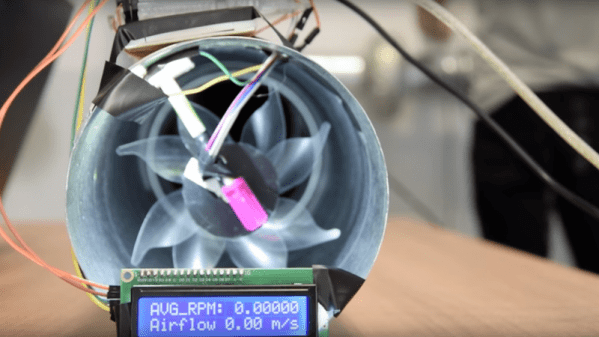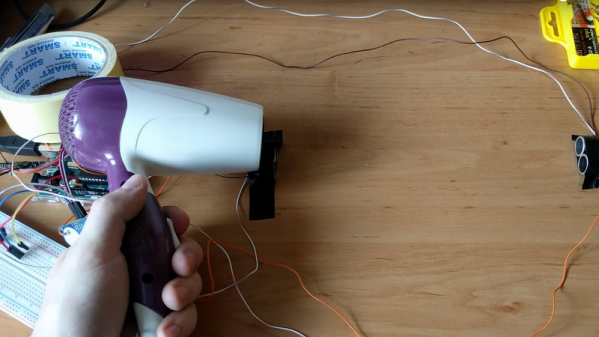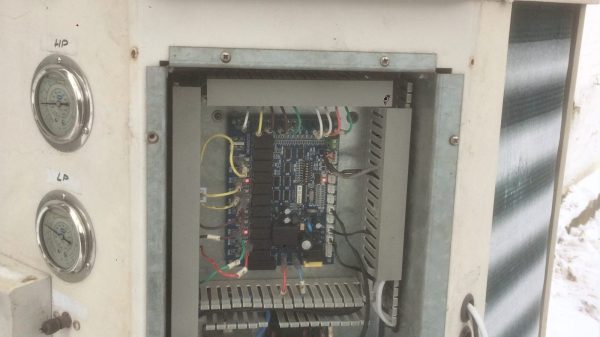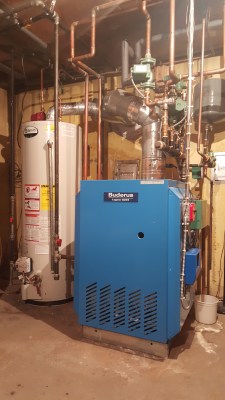Everyone is familiar with pinwheels, and few of us haven’t crafted one from a square of paper, a stick, and a pin. Pinwheels are pretty optimized from a design standpoint, and are so cheap and easy to build that putting a pinwheel to work as an HVAC duct flow meter seems like a great idea.
Great in theory, perhaps, but as [ItMightBeWorse] found out, a homemade pinwheel is far from an ideal anemometer. His experiments in air duct flow measurements, which previously delved into ultrasonic flow measurement, led him to try mechanical means. That calls for some kind of turbine producing a signal proportional to air flow, but a first attempt at using a computer fan with brushless DC motor failed when a gentle airflow couldn’t overcome the drag introduced by the rotor magnets. But a simple pinwheel, custom cut from patterns scaled down from a toy, proved to be just the thing. A reflective optosensor counts revolutions as the turbine spins in an HVAC duct, and with a little calibration the rig produces good results. The limitations are obvious: duct turbulence, flimsy construction, and poor bearings. But for a quick and dirty measurement, it’s not bad.
Looking for an outdoor anemometer rather than an HVAC flow meter? We’ve got one made from an old electric motor, or a crazy-accurate ultrasonic unit.
Continue reading “Custom Cut Pinwheel Makes A Useful HVAC Duct Flow Meter”








 It’s been said that hackers are enamored with complex networks. In the 60s and 70s, the telephone network was the biggest around, singing a siren song to an entire generation of blue-boxing phone phreaks. I started a bit closer to the house. As a child I was fascinated by the heating system in the basement of our home: a network of pipes with a giant boiler in the middle. It knew when to come on to provide heat, and when to kick on for hot water. I spent hours charting the piping and electrical inputs and outputs, trying to understand how everything worked. My parents still tell stories of how I would ask to inspect the neighbors heating systems. I even pestered the maintenance staff at my nursery school until they finally took me down to see the monstrous steam boiler which kept the building warm.
It’s been said that hackers are enamored with complex networks. In the 60s and 70s, the telephone network was the biggest around, singing a siren song to an entire generation of blue-boxing phone phreaks. I started a bit closer to the house. As a child I was fascinated by the heating system in the basement of our home: a network of pipes with a giant boiler in the middle. It knew when to come on to provide heat, and when to kick on for hot water. I spent hours charting the piping and electrical inputs and outputs, trying to understand how everything worked. My parents still tell stories of how I would ask to inspect the neighbors heating systems. I even pestered the maintenance staff at my nursery school until they finally took me down to see the monstrous steam boiler which kept the building warm.










